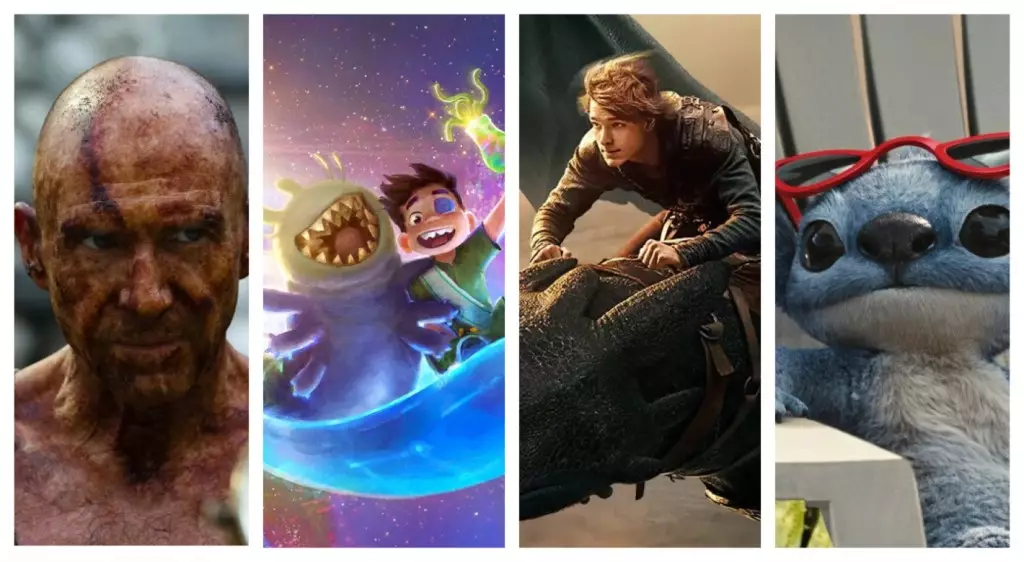The recent cinematic release of Danny Boyle’s “28 Years Later” has stunned industry analysts with its spectacular $60 million global debut. What makes this figure particularly noteworthy is its balance; both domestic and international theaters contributed equally, each raking in $30 million. In a landscape where lofty predictions often fall by the wayside, this opening exceeds pre-weekend forecasts and underscores the movie’s compelling appeal.
The horror genre, particularly one helmed by an auteur like Boyle, has a special way of resonating with audiences. It isn’t merely the thrill that draws viewers in, but rather the artistry behind the cinematic experience. This is reflected in “28 Years Later,” which has outperformed previous auteur horror releases such as “Sinners” and even “Nosferatu.” While comparative figures generally showcase a slight bump in performance against established horror franchises like “A Quiet Place: Part II,” the significant aspect here is the fresh narrative energizing an otherwise saturated genre.
Market Dynamics Shaping the Scores
As the film broke box office records, it did so amidst a challenging environment. A major heatwave swept across several key markets, yet this didn’t deter the audiences keen to indulge in a spine-tingling experience. The UK market shone brightly for this release, propelling “28 Years Later” to a No. 1 ranking with an impressive $6.4 million collected. Following closely behind was Mexico, where it grossed $2.7 million, while the Middle East revealed potential as a new hotspot with a $1.8 million debut.
Australia, Korea, Germany, France, and Spain also joined the ranks of markets yielding respectable figures. These diverse earnings illustrate not merely a local appeal but a remarkable global resonance with Boyle’s storytelling. Each region presents an opportunity for further exploration of how cultural nuances affect audience receptivity, and “28 Years Later” has certainly navigated these waters with commendable expertise.
The Family Animation Struggle
Contrasting sharply with the success of “28 Years Later” is the lukewarm premiere of Pixar and Disney’s “Elio,” which stumbled to a lackluster $35 million globally. Furthermore, a disheartening $14 million emerged from 43 international markets. Such outcomes force a frank discussion about the depth of viewer engagement with animated films, particularly as this offering premiered during a period when children’s school holidays haven’t yet commenced in many regions.
The contrast begs the question: what is missing from modern animation? Young audiences are inherently resistant to passivity; if a film fails to captivate them outright, it risks falling into obscurity. Building a franchise in such competitive and dynamic sectors is a marathon, not a sprint. Disney has certainly produced noteworthy past successes like “Elemental” and “Encanto,” which resonated on emotional and thematic layers. “Elio,” however, falters in its initial phases and must now rely on future holiday seasons and a dearth of animated competition to survive.
While the film’s premiere, particularly in Korea, saw a brief upswing to No. 1 after its opening weekend, it clearly cannot match the sustained momentum of established franchises. The potential exists, but whether animated features can maintain relevance in an overcrowded market will continue to be a pivotal conversation piece for industry insiders.
Global Trends and Ongoing Battles
As the box office landscape continues to evolve, it’s fascinating to observe how long-standing franchises like “How to Train Your Dragon” are faring. With a staggering $358.2 million amassed so far, this title reigns supreme in the market. Not only is it drawing substantial crowds, but it has also managed to stabilize its viewership, a crucial aspect for sequels hoping to expand their narrative universes.
Interestingly, this success comes amidst efforts to innovate while understanding what audiences come to expect from their favorite characters. “How to Train Your Dragon” is drawing deep connections with viewers, offering a blend of nostalgia and fresh storytelling that keeps audiences engaged. The film’s capability to bridge generational gaps illustrates how complex these relationships can be in the entertainment industry.
Meanwhile, classic franchises and new releases alike demonstrate that the interplay between visibility, marketing, and pure cinematic quality plays an increasingly important role in box office viability. As new offerings emerge and trends shift, the film industry will always pivot around innovations, audience preferences, and the inescapable question: what makes a film resonate? Each new release seeks a compelling answer to this essential question, as studios maneuver through the peaks and valleys of audience desire.

